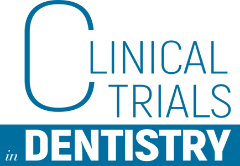Articles
IMMEDIATE, EARLY (6 WEEKS) AND DELAYED (4 MONTHS) SINGLE POST- EXTRACTIVE IMPLANTS: 3-YEAR POST-LOADING DATA FROM A RANDOMISED CONTROLLED TRIAL
PURPOSE. To compare the clinical outcome of single implants placed immediately after tooth extraction with those placed 6 weeks after tooth extraction (early placement), and those placed 4 months after extraction and socket healing (delayed placement).
MATERIALS AND METHODS. Two hundred and ten patients requiring one single implant-supported crown to replace a tooth to be extracted were randomised into 3 groups of 70 patients each to receive immediate, early (at 6 weeks), or delayed (after 4 months of healing) post-extraction implants, according to a parallel-group design. When needed, patients from the immediate and early groups had bone substitute grafts in the extraction socket, covered with a resorbable membrane, at implant placement. Sockets randomised to delayed implants were grafted in the same manner if poorly preserved, or in the “aesthetic” areas (from second upper premolar to second upper premolar). Implants inserted with at least 25 Ncm torque were left to heal unloaded for 4 months, whereas those inserted with less than 25 Ncm were left to heal unloaded for 6 months. Temporary crowns were delivered, and were to be replaced by definitive ones after 4 months. Outcome measures were crown and implant failures; complications; peri-implant marginal bone level changes; aesthetics, as assessed using the pink aesthetic sco- re (PES); and patient satisfaction, recorded by blinded assessors. Patients were followed-up for 3 years post-loading.
RESULTS. Three years after loading, dropouts were: five (7.1%) patients from the immediate, nine (12.9%) from the early, and eight (11.4%) from the delayed group. Five implants (9.2%) failed in the immediate, four (6.6%) in the early, and one (1.6%) in the delayed group (P [Freeman-Halton] = 0.282). Apart from the crowns that failed due to implant losses, no other definitive crown had to be remade. Complications affected eleven patients from the immediate group, 12 from the early, and eight from the delayed group (P [chi-square test] = 0.596). Mean peri-implant marginal bone loss after 3 years was -0.33 ± 0.22 mm at immediate, -0.43 ± 0.26 mm at early, and -0.49 ± 0.30 at delayed implants; (P [Kruskal Wallis test] <0.001); there were significant pairwise differences between immediate and early (0.10 mm; CI 95% -0.02; 0.22; P [Dunn-Bonferroni post-hoc] = 0.0391) and immediate and delayed implants (0.16 mm; CI 95% 0.04; 0.27; P [Dunn-Bonferroni post-hoc] = 0.0004), but no difference between early and delayed implants (0.06 ± 0.05 mm; CI 95% -0.06; 0.18; P [Dunn-Bonferroni post-hoc] = 0.6015). Three years after loading, the mean overall PES were 12.25, 11.98 and 11.17 in the immediate, early and delayed groups, respectively (P [Kru- skal Wallis test] <0.001); there were significant pairwise differences between immediate and delayed (1.08 ± 0.27 mm; CI 95% 0.45; 1.72; P [Dunn-Bonferroni post-hoc] = 0.0006), and early and delayed implants (0.81 ± 0.27 mm; CI 95% 0.17; 1.46; P [Dunn-Bonferroni post-hoc] = 0.0099), but no difference between immediate and early implants (0.27 ± 0.27 mm; CI 95% -0.37; 0.90; P [Dunn-Bonferroni post-hoc] = 1.0000). There were no significant differences in patient satisfaction regarding function (P = 0.353) or aesthetics (P=0.531), and all patients would undergo the same procedure again.
CONCLUSIONS. No statistically significant differences in failure, complications or patient satisfaction were observed when placing single implants immediately, 6 weeks or four months after tooth extraction, even though failures were more frequent in immediate and early implants. Bone loss was significantly smaller at immediate implants, and aesthetic evaluation scores were higher for immediate and early implants.



